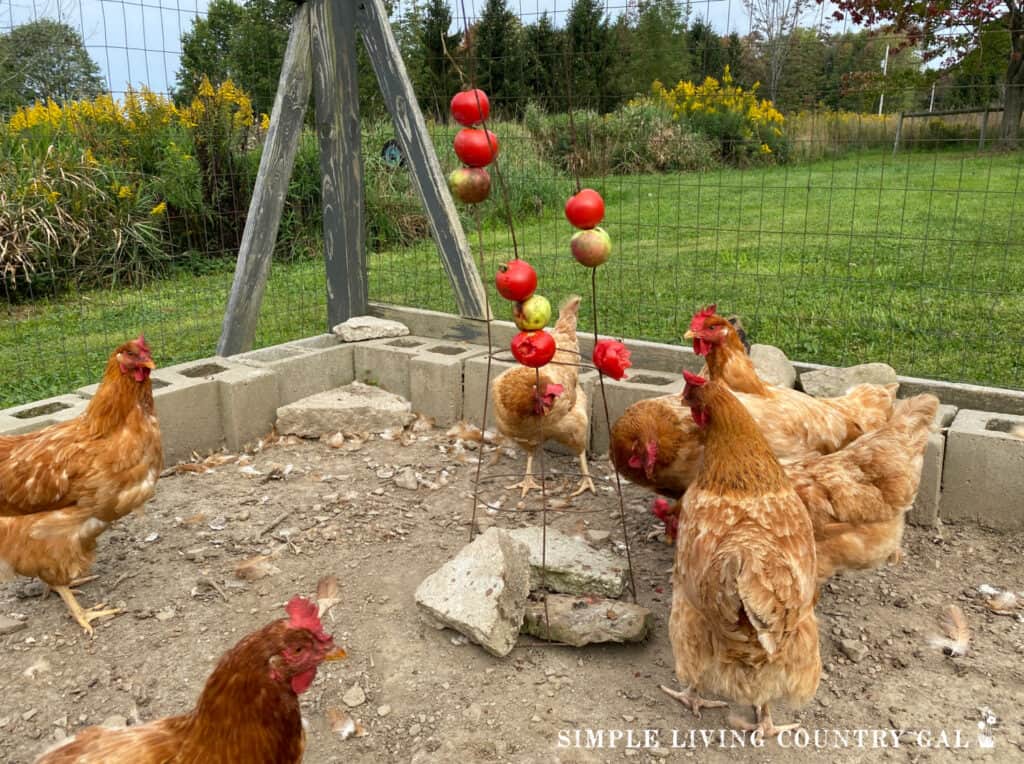Homesteading Hacks
If you are looking for useful tips, this list of genius (and easy) homesteading hacks is a read you will want to bookmark for the future.
Homesteading tips are good, but hacks are even better!

Homesteading can be both a rewarding and satisfying lifestyle, but it can be hard to know which tips and tricks to use in order to make your setup successful. If you’re looking for hacks that require little expense but maximize efficiency, then this article is right up your alley! We’ve compiled a list of hacks that will save you time, money, and effort while taking care of your livestock, garden, home, pastures, composting piles, and more. Learn how you can increase self-sufficiency and rely less on stores by making the most out of what’s already available at your home.
What does it mean to be self-sufficient?
Self-sufficiency means being able to produce or acquire what you need for basic living without relying on outside help. While it’s not possible to become completely self-sufficient, homesteading is a great way to reduce your reliance on stores and other sources of supplies and materials.
Homesteading Hacks
To help, we’ve broken our list down into different areas of a common homesteading setup. Work your way down, focusing on the tips that will help you the most. Come back when you are ready to add more and transform your homestead into a flourishing lifestyle for your entire family.
Livestock hacks
Encouraging healthy animals is the best way to keep the vet bills low. These hacks will help to keep your animals healthy and happy on a budget.
- Upcycle an old plastic tote into a DIY hay feeder. Use bolts to secure it to the side of the pen. Cut a few openings in the sides for the goats to access the hay. Keep the lid on until you need to fill it.
- Create your own fly trap using sugar, yeast, and water to eliminate pesky insects around the animals’ living area.
- Create a friendship with your local vet. Schedule a visit for them to come out and teach you basic livestock care for your animals—things like giving shots, hoof care, prenatal care, and nutritional needs.
- Make a low-cost incubator from an old cooler and a light bulb for hatching eggs.
- Use a milk jug for a no-spill water option for your ducklings.
- Collect rainwater to provide your livestock with fresh, clean water during dry periods.
- Turn a tomato cage upside down and secure it so it doesn’t tip over. Put produce like tomatoes or cucumbers on the legs and let your chickens enjoy a snack that is also a boredom buster.

More Livestock Resources:
Garden hacks
Gardening is one of the most rewarding parts of homesteading, but it can sometimes be challenging. Use these tips and tricks to save time and money while growing a successful garden.
- Plant flowers alongside vegetables to attract pollinators and help your plants grow faster.
- Recycle old containers like milk jugs to cover plants when there is a risk of frost or to deter pests. Be sure to remove a few hours each day to allow for pollination.
- Invest in a rain barrel to store water for the garden during dry spells.
- Use an empty egg carton to start seeds indoors, then transplant them outside when ready.
- Build a trellis from repurposed wood or fence panels for climbing vegetables like squash and beans.
Garden Tools:
Good Ideas Rain Wizard 50 Gallon Plastic Rain Barrel Water Collector with Brass Spigot, Oak (2 Pack)


More Gardening Resources:
- How to Grow Herbs in Containers
- How to Grow Strawberries for Beginners
- How to Grow Pumpkins for Beginners
Heating your home hacks
DIY solutions for keeping warm in winter months. Try them all to really help lower your heating bill.
- Caulk and weatherstrip around windows and doors to keep warm air inside and cold drafts out.
- Install a programmable thermostat to help regulate the temperature in your home more efficiently.
- Take advantage of the sun’s natural heat by opening curtains on south-facing windows during the day and closing them at night.
- Utilize space heaters to warm up drafty or unused rooms in your home without driving up the electric bill.
- Place rugs on wood floors to add an extra layer of insulation and keep your feet warm.
More Frugal Resources:
Pasture care hacks
Keeping your livestock happy and healthy with carefully managed pasture space is important. Here are some tips for maintaining a well-kept pasture.
- Rotate your animals through different pasture areas to ensure even grazing and a lower risk of parasites.
- Plant cover crops like clover, alfalfa, or oats in the fall to add nutrients back into the soil.
- Use electric fencing to divide grazing areas out to keep your pasture even and healthy throughout the grazing season.
- Set up birdhouses and bat houses to help keep pests away from your pasture and naturally maintain a healthy ecosystem.
- Plant trees in strategic locations around the perimeter of your fields to provide windbreaks during storms or extreme temperatures.
- Implement no-till practices to preserve soil quality and reduce erosion.
- Supplement your pasture space with hay and grain to meet the nutritional needs of your animals.
- Gather manure regularly and spread it as fertilizer to keep your soil healthy and productive.
More Pasture Resources:
- Movable Goat Fence
- How to Train Goats on Electric Fencing
- Goat Fencing 101 Everything You Need to Know
Composting hacks
Composting can greatly reduce your household’s waste while also providing natural fertilizer for your garden. Here are some tips for composting effectively and efficiently.
- Choose an appropriate container, such as a plastic bin, wooden box, or outdoor pile.
- Use the right ratio of brown materials (dried leaves, twigs, and wood chips) to green materials (fruit and vegetable scraps, grass clippings, or coffee grounds).
- Layer your compost with soil between each layer to help promote aeration and decomposition.
- Keep the pile moist by adding water as needed but avoid making it too soggy.
- Cover your compost pile with a tarp or plastic sheeting to keep it from drying out too quickly.
- Allow your compost to sit for at least a month before using it as fertilizer on your garden beds or potted plants.
- Don’t add meat, dairy, or diseased plants to the compost pile, as they can attract unwanted pests and cause odors.
- Make sure to turn your compost at least once every couple of weeks to speed up the decomposition process and ensure that all parts of the pile break down evenly.
- Consider adding worms or other beneficial insects to help aerate and break down the compost more quickly.
- Start small and work your way up to larger batches as you gain experience with composting.
- Monitor your compost pile and remove any weeds or debris that may be taking over the space. This will help keep pests away and ensure the pile is healthy and productive.
Compost Tools and Supplies
VIVOSUN Outdoor Tumbling Composter Dual Rotating Batch Compost Bin, 43 Gallon Orange Door


More Compost Resources:
Self-sufficiency hacks
Many people look for ways to become more self-sufficient and reduce their reliance on outside resources. One way to do this is by taking advantage of everyday hacks that can make life easier and help you save money.
- Use a rain barrel to collect free water for use in your garden or lawn.
- Buy in bulk and store food items with a long shelf life to save money on groceries.
- Plant your own vegetable garden for fresh fruits and vegetables at home.
- Make use of natural sunlight by using it to dry clothes instead of using the dryer.
- Generate electricity for your home using solar panels or wind turbines.
- Make your own cleaning supplies by mixing baking soda, vinegar, and essential oils together in a spray bottle.
- Grow some of your own food in an indoor garden with natural light and hydroponic systems.
- Create natural pest repellents from ingredients in your kitchen, like citrus or banana peels and garlic cloves.
- Make your own compost pile with food waste and garden trimmings for an eco-friendly fertilizer alternative.
By trying out these simple self-sufficiency hacks, you can become more independent and reduce your reliance on outside resources. You can create a sustainable, cost-effective environment with a little effort, planning, and a few of these homesteading hacks.








